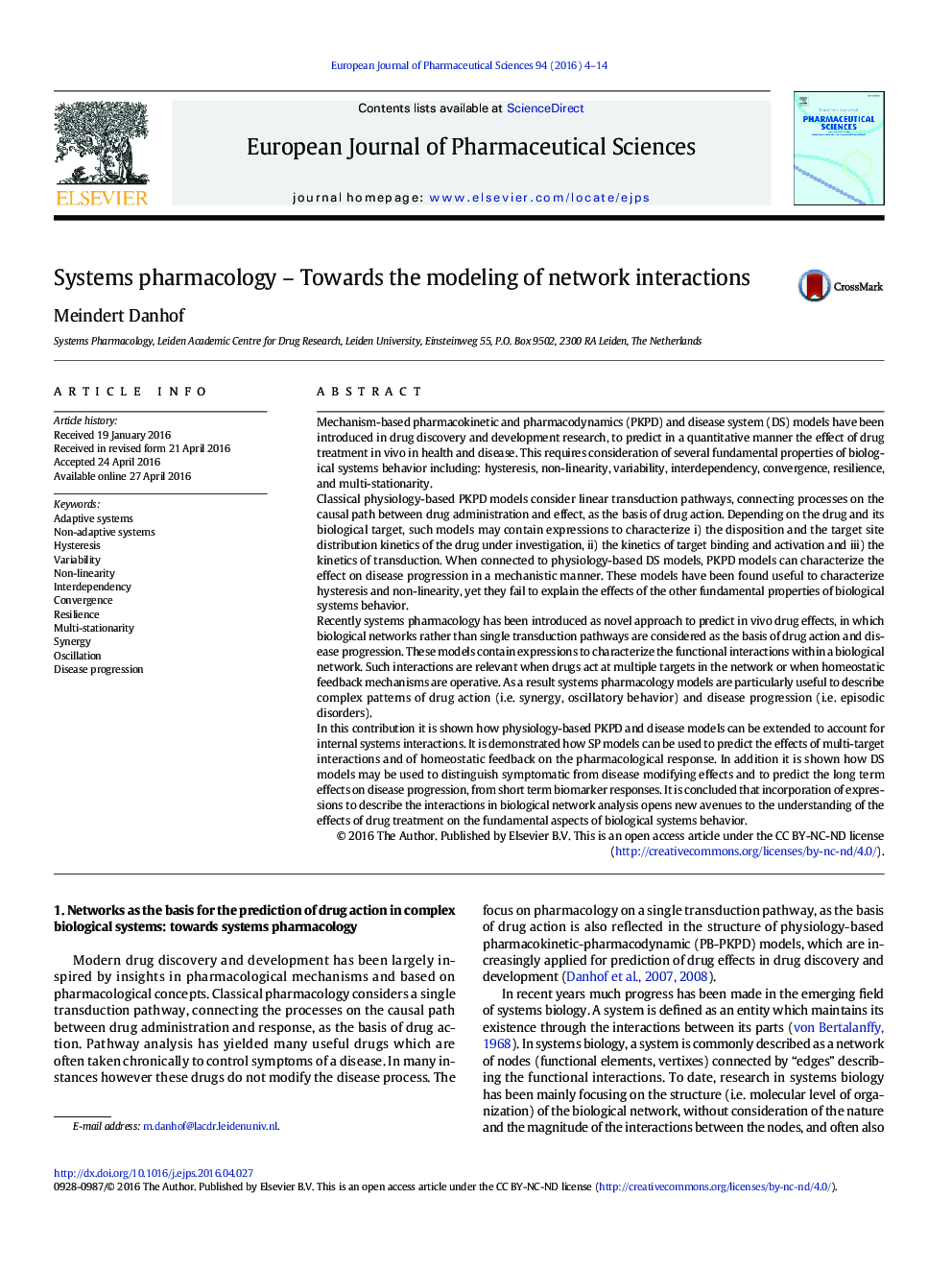| Article ID | Journal | Published Year | Pages | File Type |
|---|---|---|---|---|
| 5547956 | European Journal of Pharmaceutical Sciences | 2016 | 11 Pages |
Mechanism-based pharmacokinetic and pharmacodynamics (PKPD) and disease system (DS) models have been introduced in drug discovery and development research, to predict in a quantitative manner the effect of drug treatment in vivo in health and disease. This requires consideration of several fundamental properties of biological systems behavior including: hysteresis, non-linearity, variability, interdependency, convergence, resilience, and multi-stationarity.Classical physiology-based PKPD models consider linear transduction pathways, connecting processes on the causal path between drug administration and effect, as the basis of drug action. Depending on the drug and its biological target, such models may contain expressions to characterize i) the disposition and the target site distribution kinetics of the drug under investigation, ii) the kinetics of target binding and activation and iii) the kinetics of transduction. When connected to physiology-based DS models, PKPD models can characterize the effect on disease progression in a mechanistic manner. These models have been found useful to characterize hysteresis and non-linearity, yet they fail to explain the effects of the other fundamental properties of biological systems behavior.Recently systems pharmacology has been introduced as novel approach to predict in vivo drug effects, in which biological networks rather than single transduction pathways are considered as the basis of drug action and disease progression. These models contain expressions to characterize the functional interactions within a biological network. Such interactions are relevant when drugs act at multiple targets in the network or when homeostatic feedback mechanisms are operative. As a result systems pharmacology models are particularly useful to describe complex patterns of drug action (i.e. synergy, oscillatory behavior) and disease progression (i.e. episodic disorders).In this contribution it is shown how physiology-based PKPD and disease models can be extended to account for internal systems interactions. It is demonstrated how SP models can be used to predict the effects of multi-target interactions and of homeostatic feedback on the pharmacological response. In addition it is shown how DS models may be used to distinguish symptomatic from disease modifying effects and to predict the long term effects on disease progression, from short term biomarker responses. It is concluded that incorporation of expressions to describe the interactions in biological network analysis opens new avenues to the understanding of the effects of drug treatment on the fundamental aspects of biological systems behavior.
Graphical abstractDownload high-res image (291KB)Download full-size image
